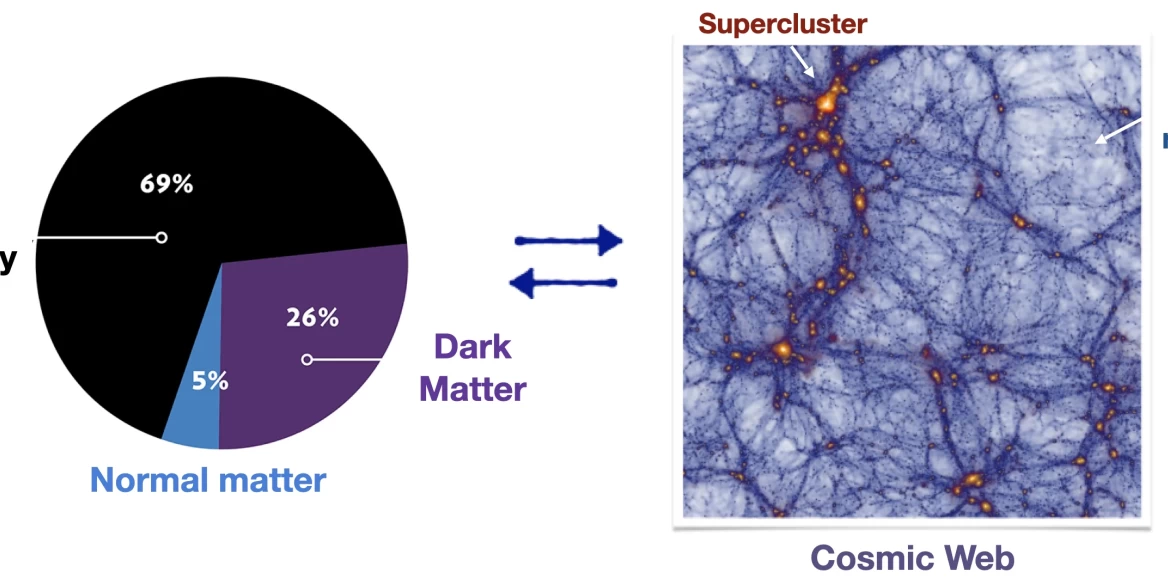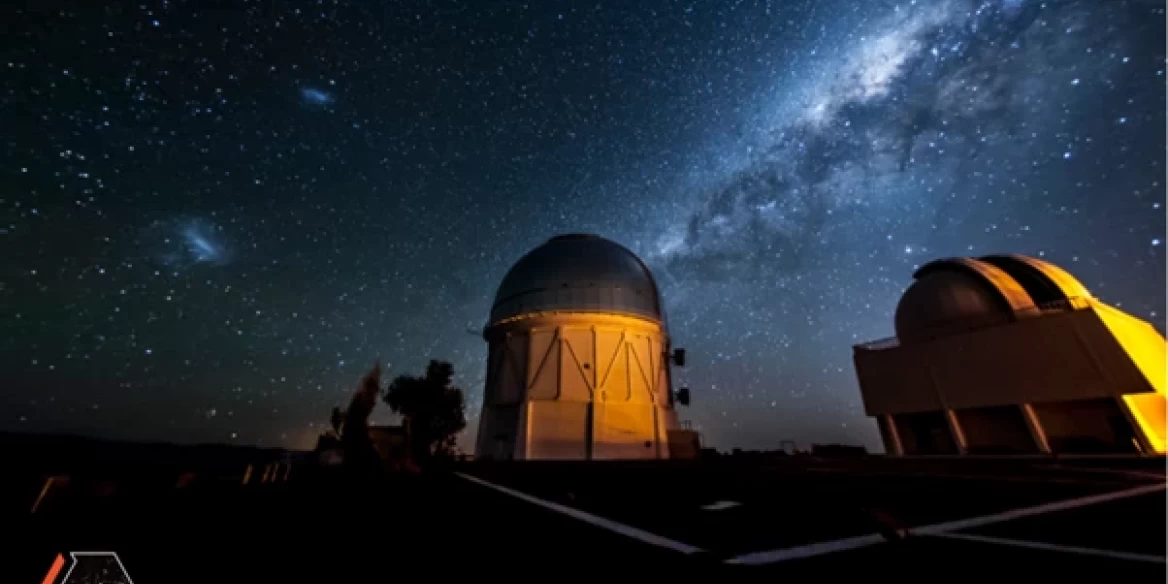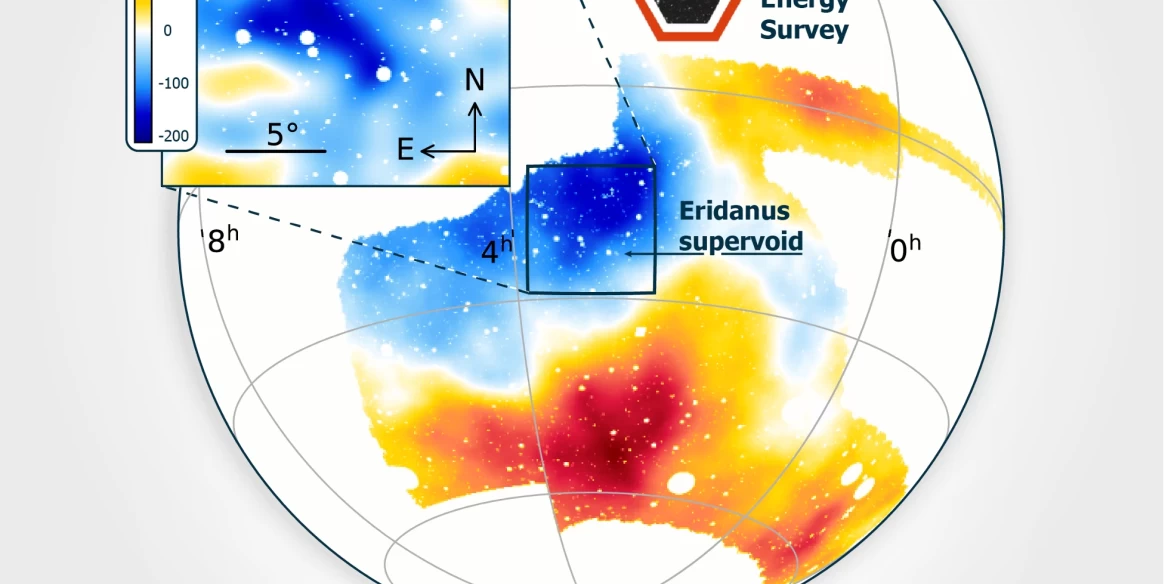The Lendület large-scale structure research group focuses on mapping the largest distinguishable structures in the Universe, cosmic voids and superclusters on scales of 100 million light-years. In particular, the team will extend their mapping to un-probed, key redshift ranges (z>1) and thus study cosmological effects in extreme cosmic environments using state-of-the-art galaxy survey datasets.
The group was involved in the discovery of an exceptionally large cosmic structure, the Eridanus supervoid, that is in the direction of the infamous "Cold Spot" anomaly of the Planck Cosmic Microwave Background maps. The alignment of these two individually rare structures offers a new way to learn about the mysterious dark energy, and motivates a better understanding of the clumpiness of matter on the largest scales in the Universe.
Media coverage:
The Dark Energy Survey has imaged roughly 5,000 square degrees of southern sky. The survey has mapped hundreds of millions of galaxies to help researchers understand the accelerating expansion of our universe. The photo shows the 4-meter Blanco telescope located at Cerro Tololo in Chile. Photo: Reidar Hahn, Fermilab.
The Cold Spot resides in the constellation Eridanus in the southern galactic hemisphere. The inset shows the microwave temperature map of this patch of sky, as mapped by the European Space Agency Planck satellite. The main figure depicts the map of the dark matter distribution created by the Dark Energy Survey team. Image: Gergő Kránicz and András Kovács.


